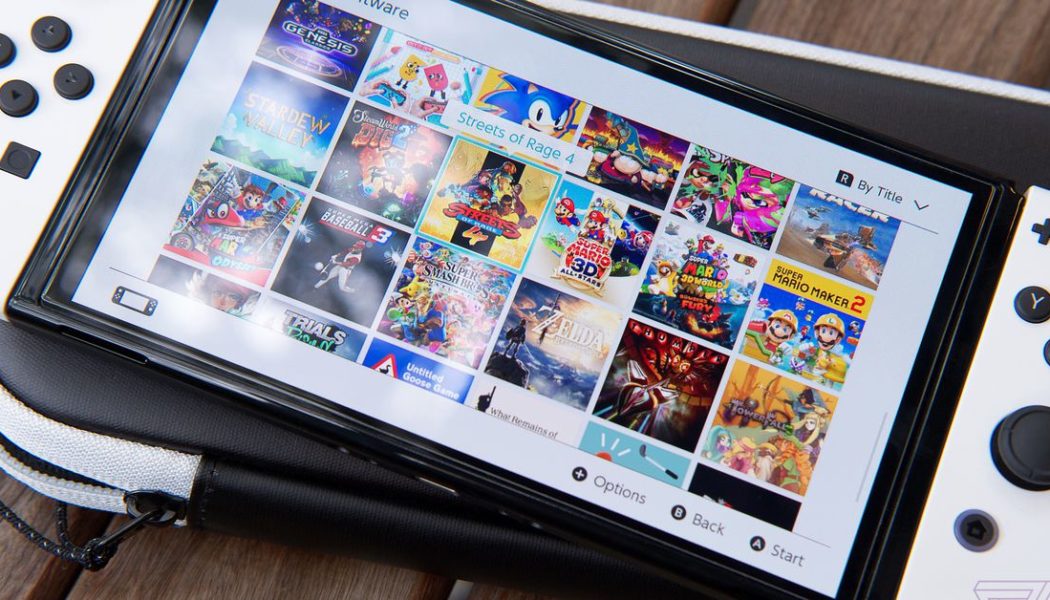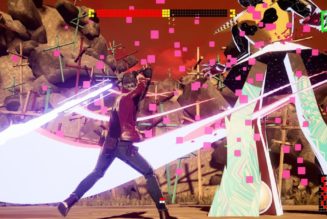
Nintendo’s Switch OLED Model is now available, and even if it’s no Switch Pro, there’s a lot to like about it. But as new owners of the console start enjoying its larger, more vibrant screen, some might also wonder whether they should pay any mind to the classic “risk” of OLED technology: burn-in.
In the early days of OLED smartphones, it wasn’t uncommon to find a mistreated demo phone at a carrier or Best Buy that had a ghastly display with home screen icons or a status bar left permanently visible whenever the screen was on. Burn-in could also befall OLED TVs if they were carelessly left on a news channel (with a ticker at the bottom) for many hours.
But we’ve come a long way since then.
Bloomberg has reported that Samsung Display is supplying the Switch OLED Model’s 7-inch panel, and that’s about the best news you could ask for when it comes to the longevity and reliability of your $350 console’s screen. Samsung has led the evolution of OLED on mobile devices, and while burn-in is still technically possible on its modern panels, they’re more resistant to it, and software-based mitigations from Samsung, LG, and others have made it less of an issue than ever before. I’ve got an LG CX OLED that shows zero signs of burn-in after a year of pretty extensive playtime.
But on a video game console with plenty of persistent HUDs and other fixed onscreen icons, it’s worth taking some care when playing the Switch OLED Model. Gaming has always been a potential hazard for OLED. Even so, as long as you use the device in conventional ways and don’t intentionally try to do lasting damage to its display, you should be totally fine — but there are still things to look out for.
Nintendo itself offers some pointers for keeping the Switch’s display looking its best over the long term. In the console’s documentation, the company says the following:
“To minimize the risk of image retention or screen burn-in occurring on the OLED screen, do not turn off the system’s default sleep mode settings and take care to not display the same image on the OLED screen for extended periods of time.”
Image retention can look similar to burn-in — something “sticks” on the screen after it’s supposed to be gone — but isn’t permanent and goes away on its own as you do other things on the console’s display. If you notice it, it’s a good warning sign to jump over to another game for a while.
Advising customers not to mess with the sleep mode defaults is Nintendo’s attempt to ensure the Switch OLED Model won’t be left sitting somewhere on a static screen for hours. Game HUDs are one thing, but even the Switch’s homescreen has a lot of fixed elements. I’d try to avoid letting the console just sit on that screen for lengthy periods of time.
Does the Switch OLED Model have any specific software features to avoid burn-in?
As far as what we can tell from what Nintendo has told us so far, the answer is no. In settings, there’s no sign of any screen refresher, which is an animation to help eliminate any image retention. Nintendo also didn’t say whether it subtly shifts pixels in the Switch’s UX to avoid potential issues. The only “burn-in protection” item in settings still applies just to connected TVs; the Switch will dim a TV’s screen after a few minutes of inactivity.
Nintendo is mostly just encouraging owners of the Switch OLED Model to use the existing auto-brightness and sleep features to prolong the panel’s lifespan.
Enjoy your Switch OLED Model and don’t sweat burn-in
If you’re using the console in normal ways and switching up the games you play, you’ll likely avoid any burn-in problems for a long, long time. You’ll probably face other issues like Joy-Con drift long before experiencing any burn-in. The proper Switch Pro might even arrive before you see any screen aberrations. Then again, maybe not. The point is that, barring any unforeseen quality defects with the screen (which is unlikely for a Samsung panel), it would take extreme circumstances for burn-in to ruin your console.
But if you’ve got the brightness cranked all the way up, turn off sleep mode, and leave it sitting on a still screen for an entire week, yeah… bad things will probably happen. Use common sense, vary it up, and don’t stress; enjoy the games.
How to avoid burn-in on the Nintendo Switch OLED Model
- Watch your brightness. Image retention and burn-in could be more likely if you’re always playing at max brightness. You don’t have to be too careful here; I immediately disabled auto brightness on my unit and typically have it in the 75 to 80 percent range.
- Vary your games. No one’s telling you not to sink hours upon hours into your favorite title. Go for it! But if you want to preserve the OLED Model’s screen for the long haul, try to mix it up with other games in between those marathon sessions so that the Switch’s pixels see some variety.
- Don’t turn off the sleep timer. By default, the Nintendo Switch is set to go to sleep after five minutes of inactivity. You can also pick options between 60 seconds and 30 minutes. I think 10 minutes is as far as I’d leave it, personally, but definitely don’t pick “never” if you want to protect the display.









